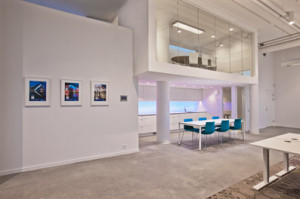 When it comes to upgrading lighting for improved energy efficiency, the light sources – and particularly LEDs – are often the ‘headline act’. However, specifiers should also be extolling the benefits of enhanced control to their clients, says Alec Fielding of Tridonic
When it comes to upgrading lighting for improved energy efficiency, the light sources – and particularly LEDs – are often the ‘headline act’. However, specifiers should also be extolling the benefits of enhanced control to their clients, says Alec Fielding of Tridonic
Over the last few years the latest generation of LED light sources and advanced drivers have made a significant impact on the energy performance of lighting installations. Typically, the savings figures that are quoted focus on the reduction in installed electrical load (e.g. replacing traditional light sources with lower wattage LEDs).
It is far less common to see detailed analysis of the additional savings delivered through improved control. Consequently, end clients are often unaware that by introducing these newer light sources they can also greatly enhance the control of their lighting. Yet such enhanced control offers a significant cost benefit to the end user with a faster return on their investment in upgrading the lighting system.
Of course, the majority of end clients will have some awareness that their lighting needs to be controlled. For example, having the lighting switched on in unoccupied areas is clearly wasteful and the majority of building operators will welcome any strategy for reducing wasted energy.
The important point, I feel, is that those building operators don’t necessarily appreciate the extent of the savings that can be achieved. To some extent, this may be because they are more familiar with traditional light sources, such as fluorescent or HID lamps, that offered only a limited level of control.
Educating clients
This is where I believe energy/sustainability managers have a key role to play in educating their clients and emphasising the controllability of newer light sources. Not just in terms of switching lighting on and off, or dimming it, in relation to parameters such as occupancy and daylight levels – but also the ability it delivers for individuals to have some degree of control over the lighting in their own space.
To put this into context, when you look at a typical commercial building, lighting equates to around 20-25% of a totally building energy solution. By enabling users to dim the lighting manually can potentially deliver energy savings of up to 25%. However this does depend on people remembering to do so. All too often once the lighting is on, it is left on at full light output while people’s attention is more focused on their work.
Using automatic occupancy control, based on either presence or absence, has been shown to provide energy savings of up to 50%, while using daylight control can deliver energy savings of up to 60%. Similarly scene setting controls in multi-purpose spaces such as meeting rooms can reduce lighting energy consumption by up to 50%.
The point here is that we are not talking about savings of just a few percent; installing lighting controls can have the potential to reduce the contribution of the lighting to the building’s overall energy consumption by 60%.
Crucially, using advanced control technologies combined with highly controllable light sources enables sophisticated control strategies that create a blend of all of these techniques to deliver maximum savings. An obvious example of this is to combine occupancy and daylight control so that lighting is off when the area is unoccupied, but when it is occupied the system still takes account of natural light entering the space to maintain required illuminance levels with minimum energy consumption.
Just as importantly, today’s lighting control systems offer a number of different interfaces with other networks. For example linking the lighting control network to the building’s local area network allows staff to adjust light levels in their space through a computer or even a mobile device such as a smart ‘phone or tablet.
For all of these reasons, I would like to see more emphasis on the potential of lighting control systems to maximise the energy savings that new light sources make possible. LED lighting plus sophisticated controls is clearly the best of both worlds.
www.tridonic.com

